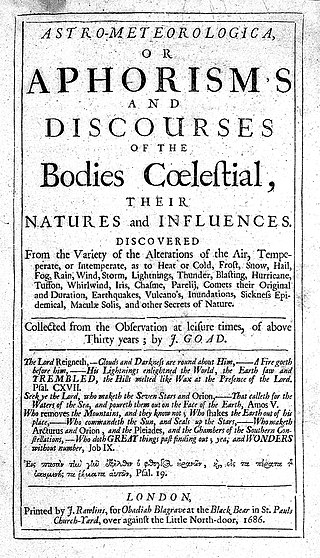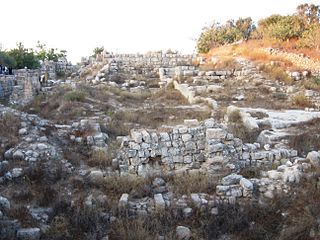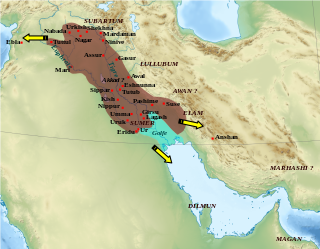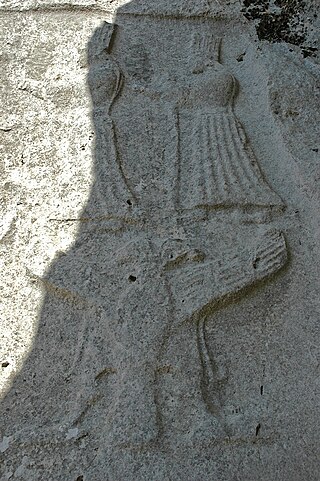Related Research Articles

In ancient Roman religion, the Salii were the "leaping priests" of Mars supposed to have been introduced by King Numa Pompilius. They were twelve patrician youths, dressed as archaic warriors: an embroidered tunic, a breastplate, a short red cloak (paludamentum), a sword, and a spiked headdress called an apex. They were charged with the twelve bronze shields called ancilia, which, like the Mycenaean shield, resembled a figure eight. One of the shields was said to have fallen from heaven in the reign of King Numa and eleven copies were made to protect the identity of the sacred shield on the advice of the nymph Egeria, consort of Numa, who prophesied that wherever that shield was preserved, the people would be the dominant people of the earth.

Astrometeorology or meteorological astrology is a pseudoscience that attempts to forecast the weather using astrology. It is the belief that the position and motion of celestial objects can be used to predict both seasonal climate and weather. Throughout most of its history astrometeorology was considered a scholarly tradition and was common in academic circles, often in close relation with astronomy, alchemy, meteorology, medicine, and other types of astrology.

The suovetaurilia or suovitaurilia was one of the most sacred and traditional rites of Roman religion: the sacrifice of a pig, a sheep and a bull to the deity Mars to bless and purify land.

The epulones arranged feasts and public banquets at festivals and games (ludi). They constituted one of the four great religious corporations of ancient Roman priests.

The cursus publicus was the state mandated and supervised courier and transportation service of the Roman Empire, later inherited by the Eastern Roman Empire. It was a system based on obligations placed on private persons by the Roman State. As contractors, called mancipes, they provided the equipment, animals, and wagons. In the Early Empire compensation had to be paid but this had fallen into abeyance in Late Antiquity when maintenance was charged to the inhabitants along the routes. The service contained only those personnel necessary for administration and operation. These included veterinarians, wagon-wrights, and grooms. The couriers and wagon drivers did not belong to the service: whether public servants or private individuals, they used facilities requisitioned from local individuals and communities. The costs in Late Antiquity were charged to the provincials as part of the provincial tax obligations in the form of a liturgy/munus on private individual taxpayers.
Abydenus or Abydenos was a Greek historian who wrote a history of Assyria and Babylonia entitled On the Assyrians. Only some fragments are preserved by Eusebius in his Praeparatio Evangelica and the Armenian translation of his Chronicon; by Cyril of Alexandria in his work against the Emperor Julian; and by George Syncellus.
Andromachus was the ruler of Tauromenium in eastern Sicily in the middle of the 4th century BCE, and the father of the historian Timaeus.
The Synoikia was an ancient Greek festival held in Athens commemorating the political unification of Attica. It was also called the Thesean Synoikismos and the Feast of Union, and celebrated Theseus as founder of Athens and the goddess Athena as the city's patron goddess. The festival was celebrated in the month of Hekatombeion on the 16th. A two-day festival, on the 15th and the 16th was held every second year.
Pallakae or pallakai was the general name given to a concubine in ancient Greece.

Samaria was a city in the historical region of Samaria that served as the capital of the northern Kingdom of Israel during the 9th and 8th centuries BCE. Towards the end of the 8th century BCE, possibly in 722 BCE, Samaria was captured by the Neo-Assyrian Empire and became an administrative center under Assyrian, Babylonian, and Persian rule. During the early Roman period, the city was expanded and fortified by Herod the Great, who renamed it “Sebastia” in honor of emperor Augustus.

The Pipes of Pan is an oil-on-canvas by Spanish artist Pablo Picasso. Painted in 1923 during Picasso's classical period, the painting depicts two statuesque men of mythological origins. Frequently acknowledged to be his cornerstone work during this era, the painting makes use of a large canvas and a classical color palette that are acutely reminiscent of the ancient world. The subjects which Picasso chooses to explore within this work– male Greek youth, musical pipes, as well as the Mediterranean setting– all hark back to classical ancient art.

Akkad was the name of a Mesopotamian city. Akkad was the capital of the Akkadian Empire, which was the dominant political force in Mesopotamia during a period of about 150 years in the last third of the 3rd millennium BC.
Šumma ālu ina mēlê šakin is the title for a series of a collected number of cuneiform texts of ancient Mesopotamia amounting to one hundred and twenty clay tablets.
Zeno of Rhodes was an ancient Greek politician and historian.
Diane Atnally Conlin is an American classicist and archaeologist specializing in the art in architecture of ancient Rome. She is an associate professor at the University of Colorado Boulder and directs its excavations at the Villa of Maxentius.
The Baths of Arcadius was a Roman bath built during the year 394 in Constantinople, the capital of the Eastern Roman Empire. It is unknown whether the baths were founded by Emperor Arcadius, or by his daughter, Arcadia. Some suggest Arcadia and another woman named Marina were responsible for the construction of the baths. Alternatively, Arcadius began the construction of the baths, and Arcadia finished it. Once finished, the baths were located where the seraglio would be built. This bath was renovated by Emperor Justinian.

The Graeco-Babyloniaca are clay tablets written in the Sumerian or Akkadian languages using cuneiform on one side with transliterations in the Greek alphabet on the other.
An imperial estate in the Roman Empire it was the "personal property of members of the imperial family, as distinct from property belonging to the Roman state". On the Emperor's death, these properties passed to his successor, and not to his private heirs.

Allanzu, later known under the name Alasuwa, was a Hurrian goddess regarded as a daughter of Ḫepat. She was described as a youthful deity and in known texts often appears in association with her mother and siblings. She was also worshiped by Hittites and Luwians.
References
- ↑ Khalid Salim Isma'El and A. R. George (2002). "Tablets from the Sippar Library XI. The Babylonian Almanac" (PDF). Iraq. 64: 249–258. doi:10.2307/4200527. JSTOR 4200527.
- ↑ John M. Steele (2012). "Almanacs, Babylonian". The Encyclopedia of Ancient History. 2012 John Wiley & Sons, Inc 7 FEB 2012 DOI: 10.1002/9781444338386.wbeah21017. doi:10.1002/9781444338386.wbeah21017. ISBN 9781444338386.
- ↑ Wilfred G. Lambert, A. R. George, Irving L. Finkel - Wisdom, Gods and Literature: Studies in Assyriology in Honour of W.G. Lambert Eisenbrauns, 2000, 462 pages, ISBN 1575060043 Retrieved 2015-06-13